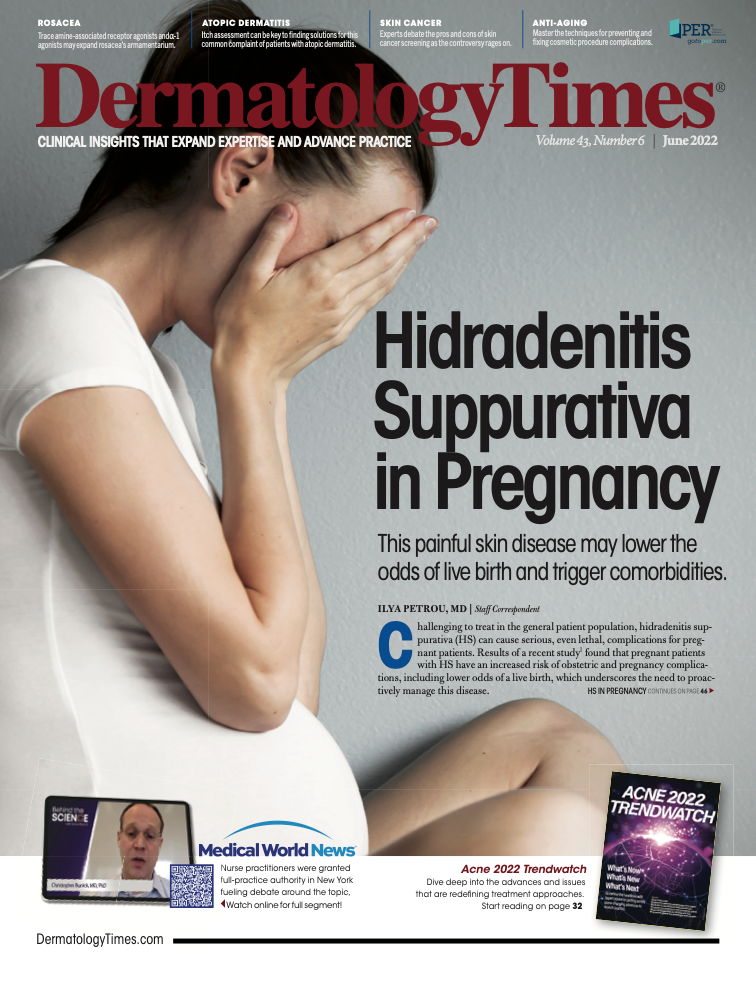- Case-Based Roundtable
- General Dermatology
- Eczema
- Chronic Hand Eczema
- Alopecia
- Aesthetics
- Vitiligo
- COVID-19
- Actinic Keratosis
- Precision Medicine and Biologics
- Rare Disease
- Wound Care
- Rosacea
- Psoriasis
- Psoriatic Arthritis
- Atopic Dermatitis
- Melasma
- NP and PA
- Skin Cancer
- Hidradenitis Suppurativa
- Drug Watch
- Pigmentary Disorders
- Acne
- Pediatric Dermatology
- Practice Management
- Prurigo Nodularis
- Buy-and-Bill
Publication
Article
Dermatology Times
Hair Happenings
Author(s):
In this month's Cosmetic Conundrums, Zoe Diana Draelos, MD, tackles the issues of hair loss after pregnancy, the role of pH in hair care, hair strengthening conditioner, and more.
Q: How long after pregnancy completion can a woman still experience normal postpartum hair loss?
Hair growth is wonderful during the late stages of pregnancy, but hair fall is common and expected after delivery. During pregnancy, many hairs are recruited into the anagen growth phase as a result of the increased estrogen levels required to maintain the pregnancy. After delivery, estrogen levels fall, resulting in shedding of the hair. This shedding can begin as early as 3 months or as late as 9 months postpartum. Pregnancy tends to synchronize hair growth with increased anagen phase follicles.
However, after delivery, the follicles resume their normal anagen/telogen rotation, resulting in shedding and thinning of the hair.
Q: How does hair strengthening conditioner function?
Many conditioners claim to strengthen hair. This is a dubious claim because hair is nonliving and cannot “grow” stronger. Yet there must be data to support the claim. What are the data for hair strengthening? Hair is made up of protein, which is the structural backbone of the hair, imparting resistance to fracture. As the hair is exposed to the elements, such as wind and sun, and damaged through grooming practices, such as combing, brushing, dyeing, and perming, it loses some of the protein backbone. Interestingly, it is the sulfur-containing proteins that are preferentially lost. This protein loss weakens the hair shafts and is part of the process known as “weathering.”
Weathered hair is porous, either from intentional poration due to hydrogen peroxide exposure from permanent dyeing or from cuticle loss as a result of grooming. These openings provide channels for diffusion of very small amounts of protein into the hair shaft. Usually, hydrolyzed animal protein is used. As the protein-containing conditioner diffuses into the hair shaft, it is able to temporarily restore some of the hair protein content. The externally applied protein will diffuse out of the hair shaft with water contact, usually during shampooing. Thus, the protein-containing conditioner must be reapplied with each shampoo. The protein may increase hair strength by 5% to 10%, which is measured as the vertical pulling force required to fracture the hair shaft. Therefore, protein-containing conditioners may improve hair strength, but only temporarily and to a limited extent. Since the cuticle gives the hair shaft its strength, minimizing cuticle damage is the key to preventing hair breakage.
Q: Does pH really matter in hair care products?
Yes, pH matters a huge amount in hair care products. Since the cuticle is the strength of the hair shaft, anything that damages the cuticle ultimately will damage the hair shaft. Very high-pH, alkaline products cause the cuticle to swell and lift up from the hair shaft. Sometimes this cuticle swelling is necessary for the success of the hair cosmetic alteration. For example, access to the cortex and medulla of the hair shaft is essential for permanent hair dye to work.
The dyestuffs are applied to the external hair shaft but must penetrate into the hair shaft in order for the oxidation/reduction chemical reaction to occur, which results in the formation of new color molecules, altering the color of the hair. Permanent hair dyes are formulated at an alkaline pH, which causes the cuticle to swell and lift away from the hair shaft, allowing the dye to readily penetrate the hair shaft. Once the dyeing procedure is completed, however, the cuticle swelling must be reversed.
This is done by applying an acidic conditioner-type cream to the hair after dyeing to restore the normal cuticular architecture. The pH of hair care products is also very important in preserving the cuticle. This is why shampoos and conditioners claim to be “pH balanced.” This means they are formulated at a neutral pH around 5 to prevent alkaline swelling of the cuticle and acidic damage to the cuticle. Proper pH hair care products are essential to hair health.
Q: Why does natural African hair break more easily than Asian hair
African hair breaks much more easily than Asian hair because of the cross-sectional shape of the hair shaft. African hair has a flattened elliptical cross-section while the shaft of Asian hair is perfectly circular. This means that Asian hair has complete symmetry across all axes where hair shaft fracture could occur, conferring strength. African hair, on the other hand, has an asymmetrical cross-section and will break along the minor axis of the ellipse where there is less hair. For this reason, African hair should not be pulled or stretched aggressively or hair loss will occur.






